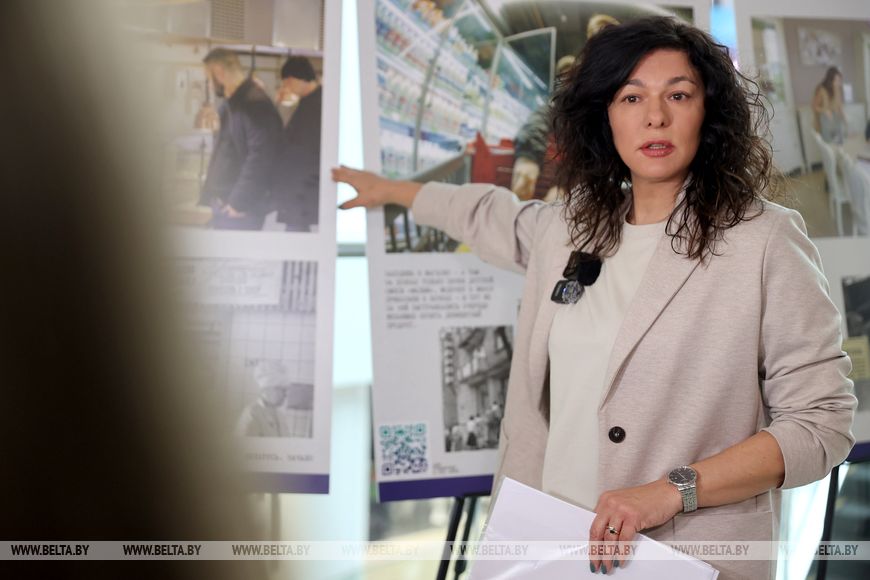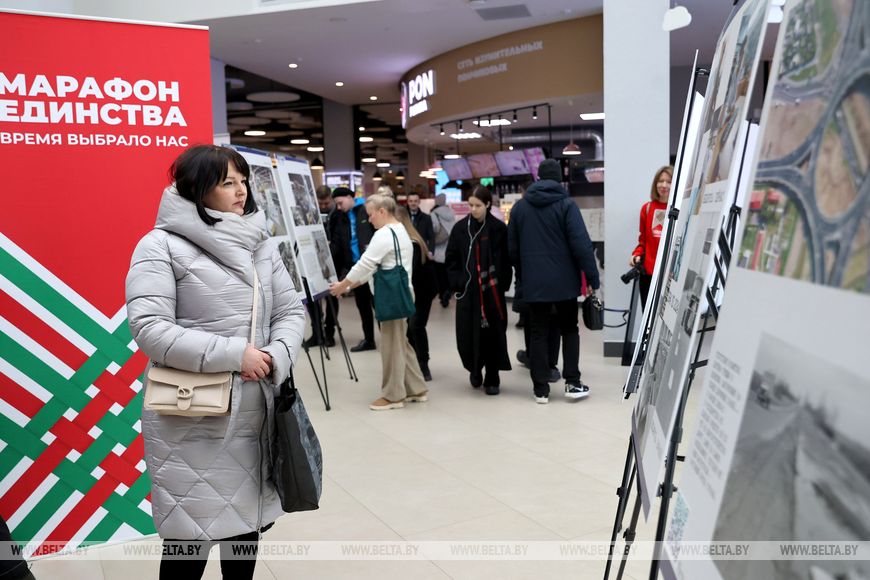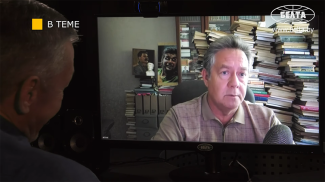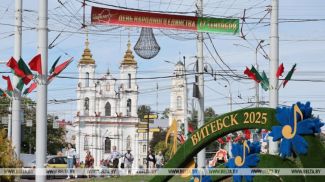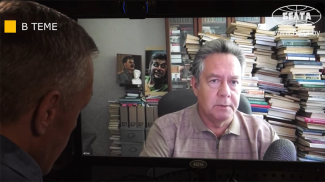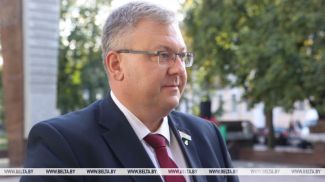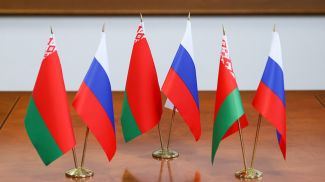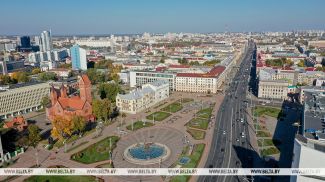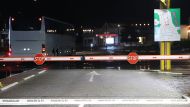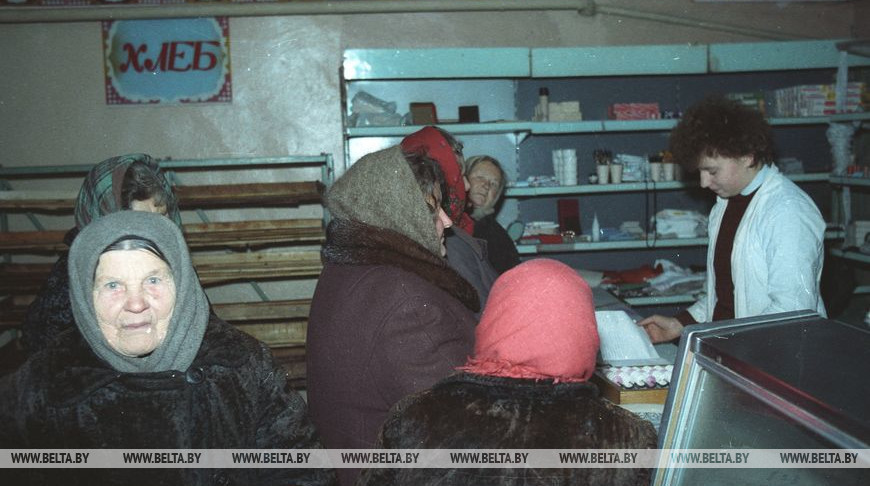
Thanks to the Marathon of Unity, many cities have already seen a new project by the Belarusian news agency BelTA called "Belarus. Takeoff". These are 40 posters with the photos that show the difference between life today and in the difficult 1990s when our country had just become independent. Some historical pictures were taken by truly talented photographers: Arkady Nikolayev, Vladimir Shuba and Aleksandr Didevich. They told us the real stories behind each of these photos.
Facts of life on the posters
While preparing the exhibition, the authors spent more than one month in libraries, studying the newspapers of the 1990s. Some headlines were very eloquent: "Women, don't get pregnant!", "Hungry officer is dangerous... ", "Lifelong Queue", "We won't see sausages until autumn...", "Telephone for the rich", "Will medicines become available?"
What for today's youth is already part of Soviet history, for BelTA photographers Arkady Nikolayev, Vladimir Shuba and Aleksandr Didevich are personal memories captured in the pictures. One of them depicts a typical marketplace from the 1990s.
"This is the Moskovsky marketplace built on a vacant lot in the south-west of the capital," Aleksandr Didevich said. "They put up stalls and sold everything from agricultural products to clothes. I myself constantly shopped there. Young people, probably, do not even imagine that their parents were happy to have these stalls. Because it was the opportunity to buy at least something - there was a shortage of everything! To buy a domestic furniture set, for example, you had to queue from 10 to 40 years! Today, the problem is different: how to choose from among a huge assortment of goods.

Another telling picture by Aleksandr Didevich is a photo of a courtyard, with a wooden structure in the middle.
“This is the courtyard of my house, I still live there. Although today it looks very different: with a large playground, bright, modern,” Aleksandr Didevich said.
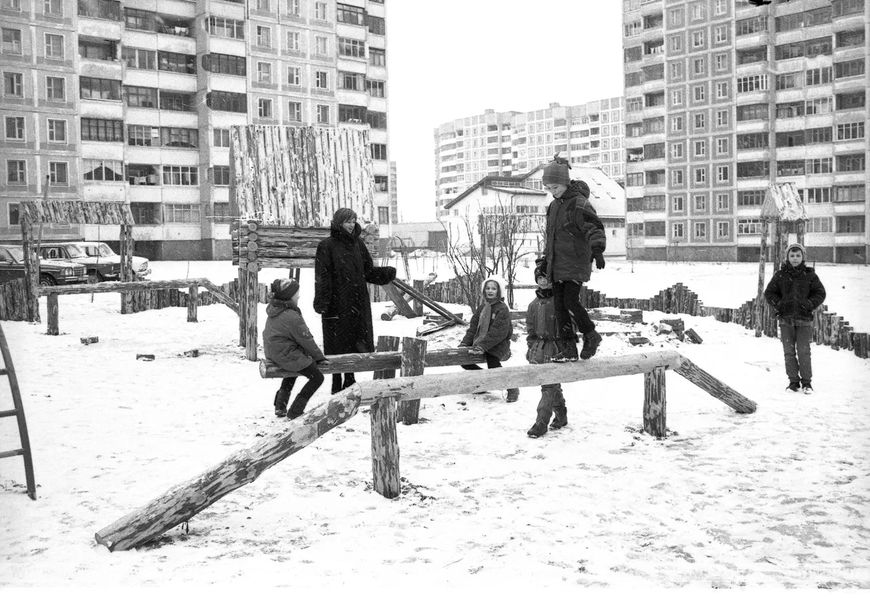
Borrow from a store until better times
The picture by Vladimir Shuba shows empty outlets, which at the break of the era were commonplace for the USSR.
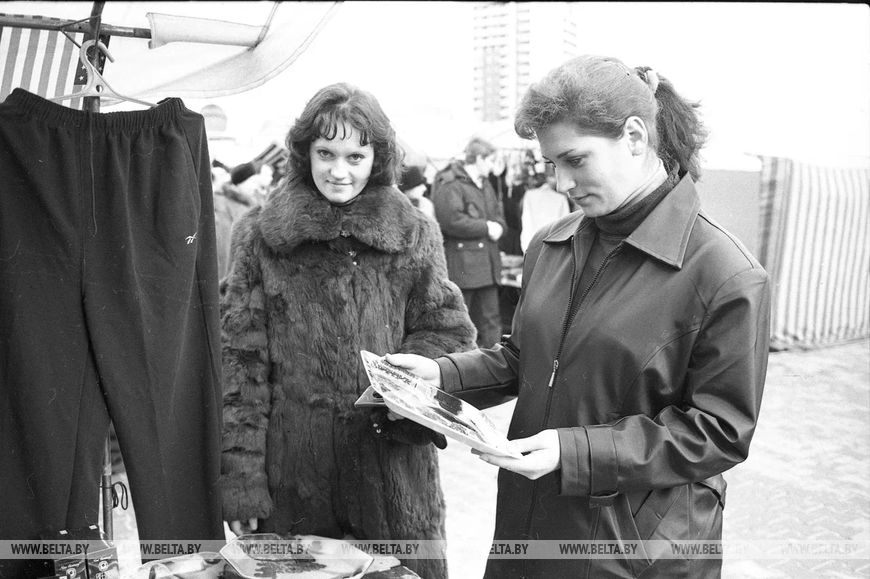
"This is a store in the Chernobyl zone," the photographer clarifies. “In the foreground there is an old lady with sad eyes, who bought the last loaf of bread. The saleswoman makes a note in the debt book. Why? Because salaries and pensions were not paid on time, people did not have money. They borrowed, until better times.
Another photo by Vladimir Shuba is from the series "new microdistricts". They built a panel house almost in an open field. Nothing around! Just snowbanks and a couple of cars in the yard.

"People were happy to get an apartment even in such unpretentious nine-storied buildings. At that time, almost all houses were standard-issue, looking the same, the author said. "It's good that now architects let their imagination run wild. Houses are commissioned with the infrastructure: children's playgrounds, underground garages, landscaping. Within walking distance there is a store, a kindergarten. In the 1990s, our yards were half-empty. The car was really considered a luxury. Who would have thought that some time later there would be more than 300 cars per 1,000 in Belarus, more than in other CIS countries?
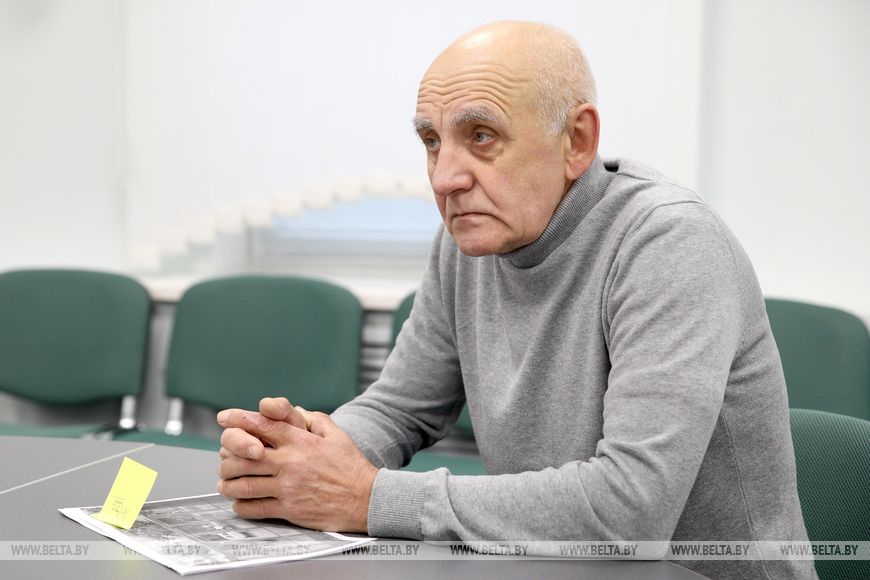
Bringing your own forks to a canteen
Visitors to the exhibition are especially impressed by a photo of a post-Soviet canteen. Huge posters on the wall suggest: "The deposit price for a fork and spoon is 10 rubles", "Comrades! Please bring cutlery with you."
"The picture, by the way, was taken in a canteen of one of the factories in the very center of Minsk," Arkady Nikolayev said. “Today such a situation seems absurd, ridiculous. But we lived through this.”
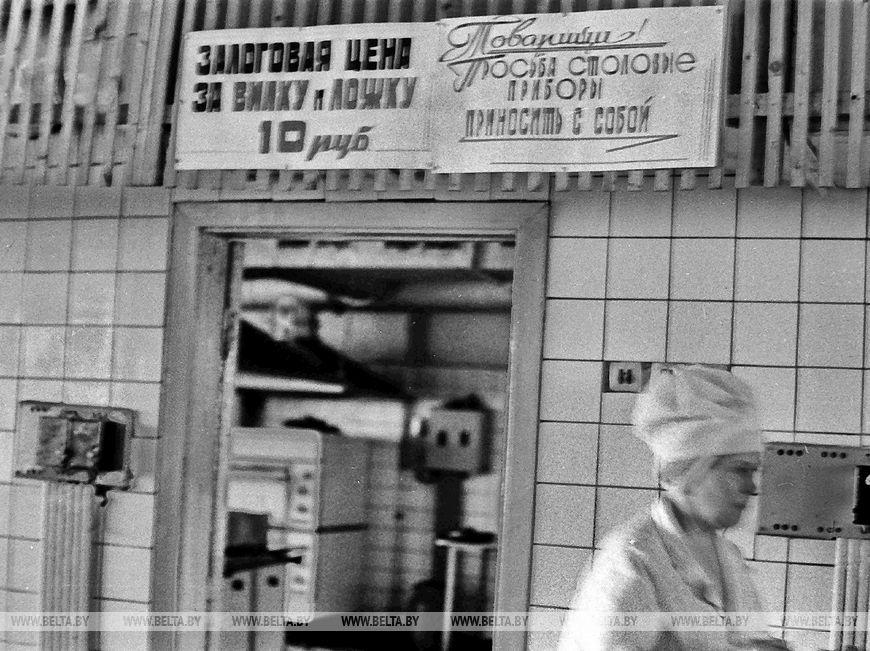
The unique atmosphere of the 1990s is conveyed by another picture: an ordinary residential building, an open window on the ground floor with a ladder. At the top the message reads: "A heel bar".
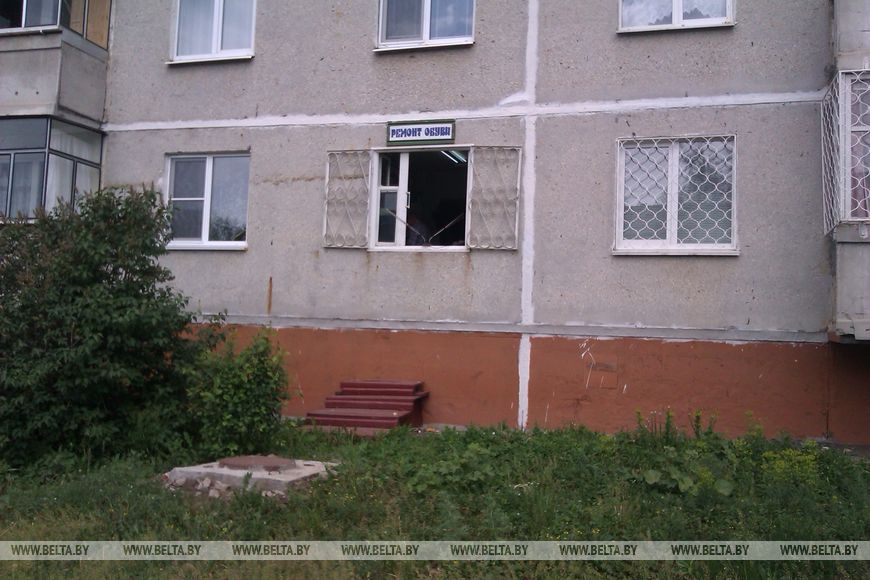
"Those were the first private entrepreneurs who tried to the best of their abilities and imagination to somehow adapt to the new market conditions and relations," Arkady Nikolayev said with a smile. “Imagine such a heel bar today? Probably, many would decide that this is a prank. In those days, such a thing was commonplace.
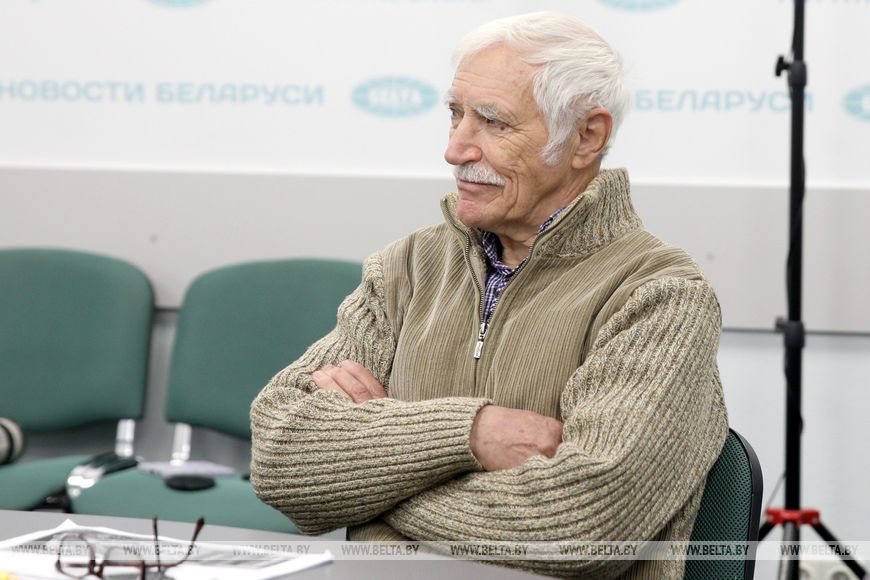
From roads with potholes to wide and comfortable highways
Journalists have always been observant, able to capture the right moment. One day BelTA journalist Arkady Nikolayev was walking to work when he noticed a miracle of technology moving along Independence Avenue. A click of the camera, and a valuable moment goes done the history.
“That smart man adjusted the top of the pram to his
bicycle as a luggage carrier. A very clever man, I would say,” he recalls. “He
rode his bike on the sidewalk because there were no bike lanes. Of course, we
knew from foreign movies that streets had bike lanes there, but we couldn't
imagine that one day we would have them too.”  The roads themselves were a dire scene back then in
the 1990s. Another photo of Arkady Nikolayev is evidence of this. One day he
was returning from a business trip along the Minsk-Slutsk highway in the
company Moskvitch-408. He saw a car that had sunk into a swamp. He stopped and
took a picture of it.
The roads themselves were a dire scene back then in
the 1990s. Another photo of Arkady Nikolayev is evidence of this. One day he
was returning from a business trip along the Minsk-Slutsk highway in the
company Moskvitch-408. He saw a car that had sunk into a swamp. He stopped and
took a picture of it.
“It was the same Moskvitch I had,” the famous
photographer recalls. “I decided to play a joke on our supply manager. I came
to work, showed him the picture and said: “I accidentally drove my car into a
swamp. I hardly got out of there myself.” He calmly responded: “Don't worry, we
will get the car out”. The BelTA workers have never been afraid of
difficulties! By the way, that road was in poor condition, with multiple large
potholes. It is probably hard to believe it, looking at modern Belarus with its
wide and comfortable highways. Today about 90,000km of public highways connect
all major communities, regional cities and the country’s capital. Almost all
the national highways have improved surfacing. Of course, much has been forgotten three decades
later. The Belarus. Takeoff exhibition is a great opportunity to refresh our
memory of the difficult history of our country. The photos reveal the strong
spirit of Belarusians who managed to withstand all the hardships and started to
write a new history of sovereign Belarus.
Of course, much has been forgotten three decades
later. The Belarus. Takeoff exhibition is a great opportunity to refresh our
memory of the difficult history of our country. The photos reveal the strong
spirit of Belarusians who managed to withstand all the hardships and started to
write a new history of sovereign Belarus.
“Thanks to BelTA photographers, we can see what was
the life like in our country several decades ago. We can realize how much has
been created over 30 years and draw our own conclusions,” BelTA Director
General Irina Akulovich said. “The photos of the Belarus. Takeoff project are
moving and sincere. They reflect the everyday life of ordinary people at that
time. We can see what bicycles, pay phones, washing machines they used, how
they rested and arranged their everyday life. Of course, not only Belarus, but
also other countries has made progress over the time. Today we have the same
gadgets and technical novelties as Germany, Australia or the USA have. If we
look back 30 years ago, we cannot but notice that our start was completely
different. It was very hard. In Germany back then nobody saw empty store
shelves and knew nothing about the existence of food coupons, although the
country also witnessed difficult processes of the so-called reunification of
the country. Therefore, the successes and achievements of Belarus within this
short period of time look even more impressive.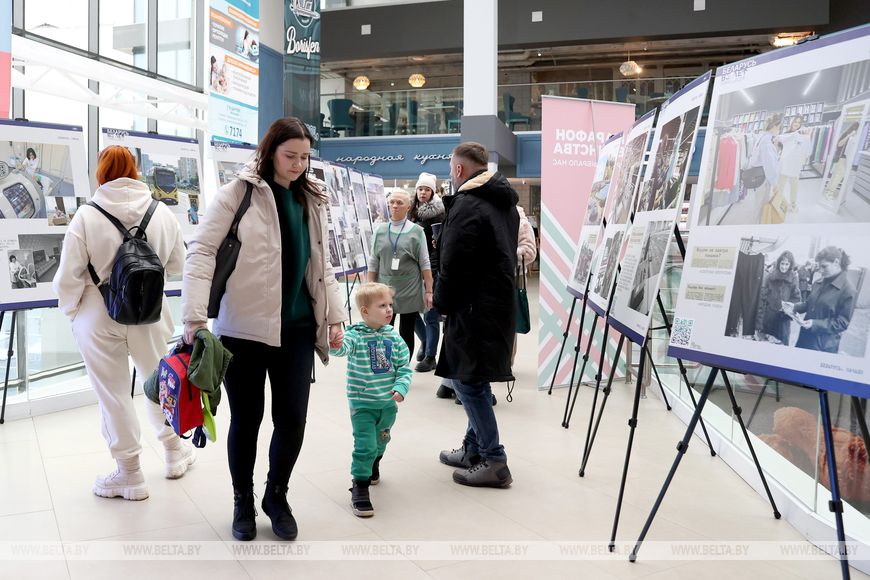
Yelena NIKOLAEVA,
Photo by BelTA.



